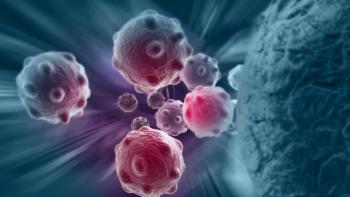
Survival in MDS Equivalent With Reduced-Intensity Conditioning
Patients with myelodysplastic syndrome undergoing a reduced–intensity conditioning regimen prior to allogeneic stem-cell transplantation had similar 2-year survival outcomes as patients who underwent myeloablative conditioning.
Patients with myelodysplastic syndrome (MDS) undergoing a reduced–intensity conditioning (RIC) regimen prior to allogeneic stem-cell transplantation had similar 2-year relapse-free and overall survival as patients who underwent myeloablative conditioning (MAC), according to the results of the RICMAC trial.
“The role of conditioning regimen intensity before allogeneic stem-cell transplantation for MDS has not been studied prospectively and recommendations are based on retrospective single-center or registry studies,” wrote Nicolaus Kröger, MD, department of stem cell transplantation, University Medical Center Hamburg-Eppendorf, and colleagues in a study
In this study, the researchers enrolled 129 patients with MDS or secondary acute myeloid leukemia and randomly assigned them 1:1 to a busulfan-based RIC or MAC.
At 1 year, the non-relapse mortality was 17% in patients assigned RIC compared with 25% in patients assigned MAC (P = .29). The cumulative incidence of relapse at 2 years was 17% for RIC and 14.8% for MAC. This resulted in a 2-year relapse-free survival of 62.4% for RIC and 58.3% for MAC.
“In a multivariate analysis for overall survival, RIC resulted in a significant survival benefit at 2 years,” the researchers wrote. The 2-year overall survival was 76% for RIC and 63% for MAC.
“Improved survival after RIC might be a result of lower mortality after relapse,” they added. “Whereas after MAC six of nine patients who experienced relapse died, in the RIC arm, only two of 11 patients who experienced relapse died.”
In the low-risk group, treatment with RIC resulted in a lower non-relapse mortality (HR, 0.30). However, in patients with intermediate- and high-risk disease, treatment with RIC resulted in a higher non-relapse mortality (HR, 1.17; and HR, 2.14). The researchers noted that “conclusive answer for this observation cannot be given, but a possible explanation would be that low-risk patients are protected from relapse and are thus more at risk for death without relapse.”
Acute grade 2 to grade 4 and grade 3 and 4 graft-vs-host disease occurred in 32.3% and 15% of patients in the RIC arm and 37.5% and 14% of patients in the MAC arm, respectively. The cumulative incidence of chronic graft-vs-host disease was 61.6% after RIC and 64.7% after MAC.
The researchers concluded by writing, “our study shows that RIC and MAC followed by allogeneic stem-cell transplantation resulted in at least an equivalent survival trend for a better 2-year overall survival, especially in the cytogenetic low-risk group,” suggesting that RIC “can be offered as an alternative to a myeloablative regimen.”
Newsletter
Stay up to date on recent advances in the multidisciplinary approach to cancer.
















































































